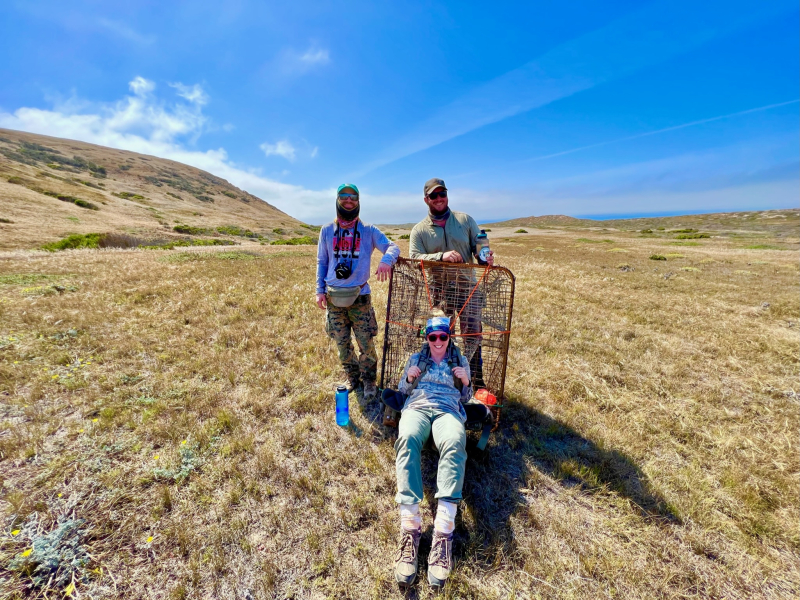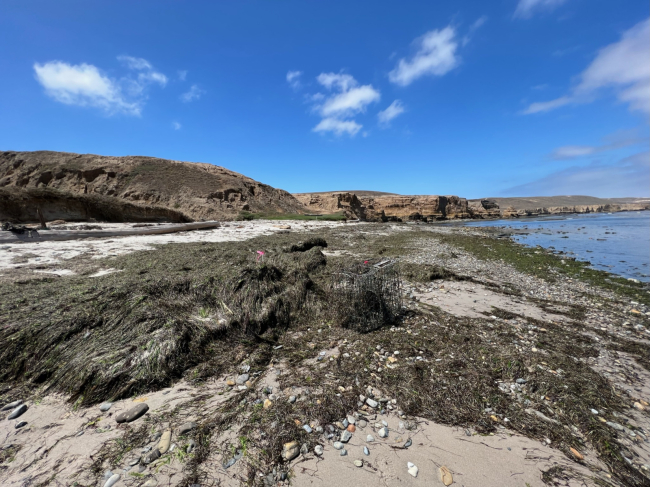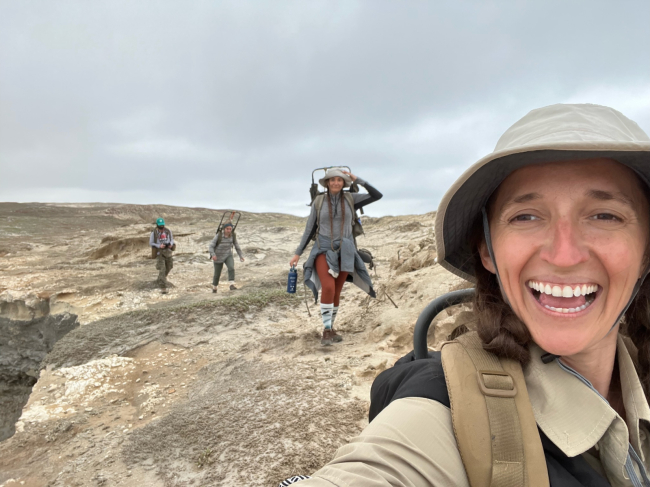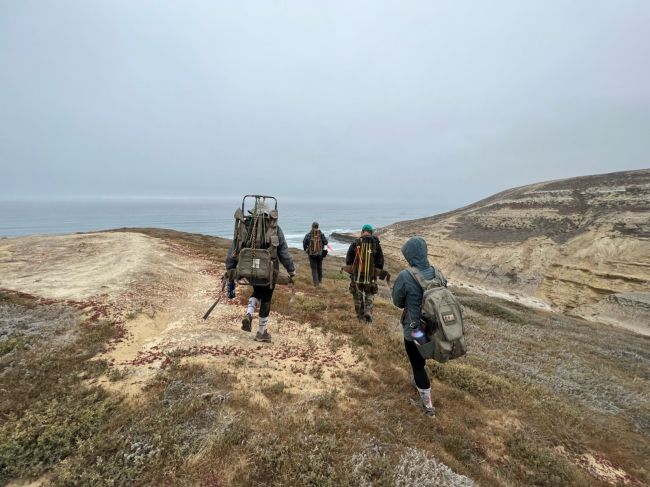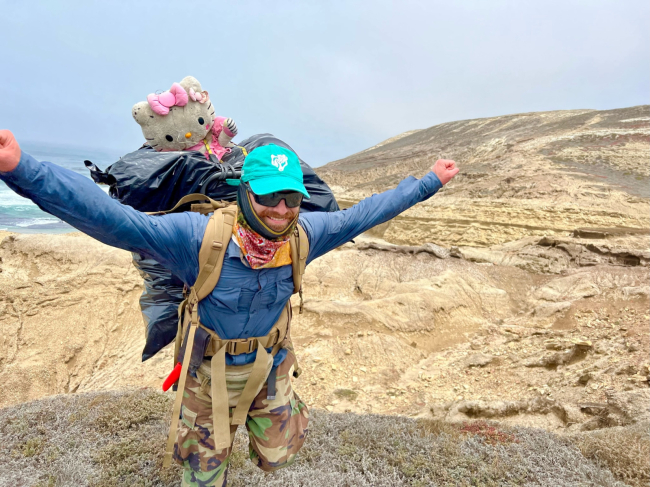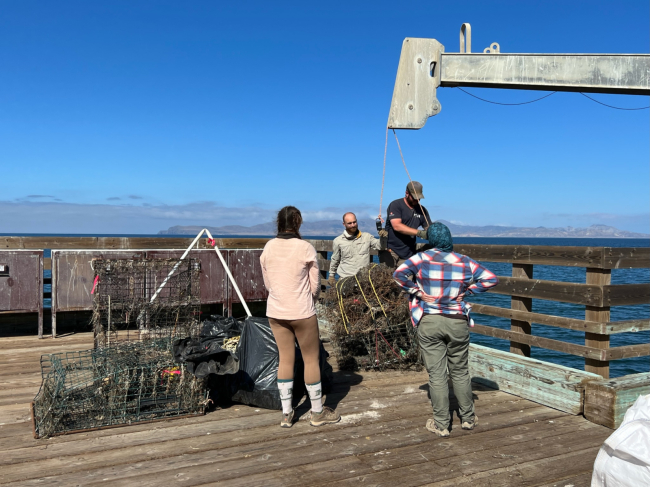Staff, faculty, and students at California State University Channel Islands (CSUCI) Santa Rosa Island Research Station (SRIRS) have been working to monitor and remove marine debris from portions of Santa Rosa and Santa Cruz Islands since 2015. With support from the NOAA Marine Debris Program, over 7,500 pounds of debris have been removed from the islands since 2020. This three-year project is an extension of past research and collaborative efforts of partners across the Channel Islands.
CSUCI invited the NOAA Marine Debris Program California Regional Coordinator, Christy Kehoe, and the program’s California Sea Grant Extension Fellow, Tanya Torres, for a week-long site visit to remove and assess the amounts, types, and sources of marine debris on Santa Rosa Island. Santa Rosa Island is the second largest of the Channel Islands of California within the Channel Islands National Marine Sanctuary and the Channel Islands National Park.
The Channel Islands National Marine Sanctuary protects 1,470 square miles of ocean waters off the coast of California and is rich in cultural importance as the ancestral homelands of the Chumash. It also holds maritime heritage with historic shipwrecks and a history of marine trade through the Santa Barbara Channel. The sanctuary is located near major population centers in Southern California, but these isolated protected areas serve as habitat for endangered birds, four species of pinnipeds (California sea lions, northern fur seals, harbor seals, and northern elephant seals), and endemic island foxes that don’t live anywhere else in the world. It also contains thousands of significant and federally protected archeological sites.
The Chumash tribe call this land, Wima, meaning redwood, due to the driftwood that would wash up on their north-facing shores. Today, driftwood isn’t the only thing appearing on its coasts. Despite its natural and remote beauty, marine debris is a common site on island shorelines. In coordination with the National Park Service and the CSUCI team, the NOAA Marine Debris Program team participated in the project’s spring monitoring and removal efforts on remote beaches. Using the NOAA Marine Debris Monitoring and Assessment Project protocols, the team surveyed 100-meter transects to identify and track the type of debris found across the islands. Commonly found items included lost fishing gear, single-use plastic items, and microplastics.
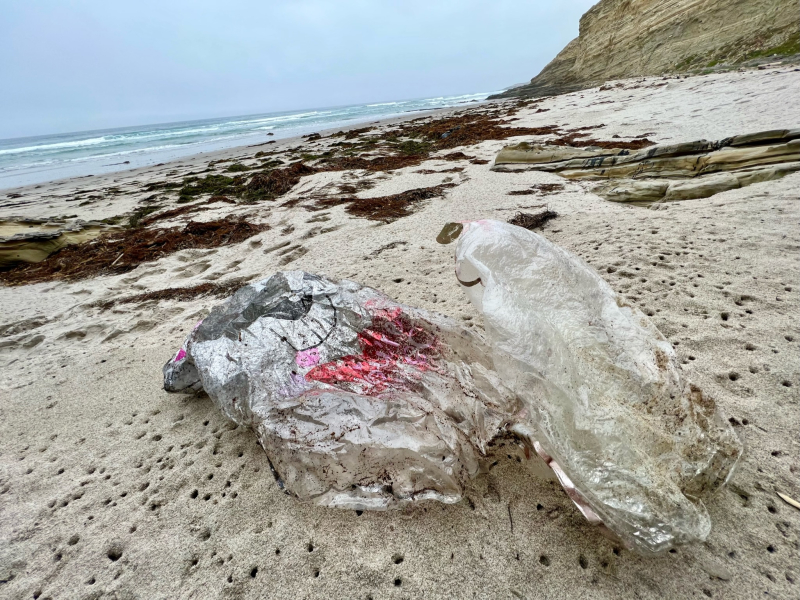
Accessing, surveying, and removing debris from the remote Santa Rosa Island requires a lot of planning, including obtaining permits, coordinating travel, planning around the tides, and developing unique approaches to collect and transport the debris over hard terrain. Each trip begins with a 2-3 hour ferry ride to cross the Santa Barbara Channel, followed by a 1-2 hour trip by vehicle on bumpy unpaved roads. The CSUCI team and volunteers then hike down the rugged and rocky shores to the study site and survey the amount and types of debris present. Once collected, the debris is strapped onto heavy frame backpacks that the removal team then hauls over the rocky cliffs and up to a vehicle for transport back to the mainland.
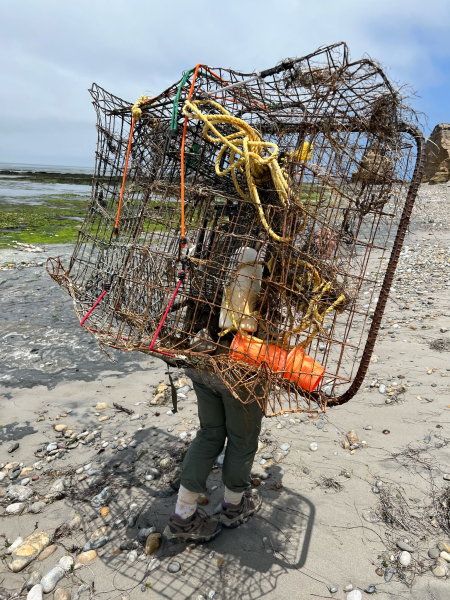
Once the debris is transported to the mainland, it is categorized and weighed at the CSUCI campus in Oxnard. In total, around 745 pounds of various marine debris was collected, including fishing gear (lobster and crab traps were roughly 214 pounds), balloons, single-use plastics, a pair of shoes, bottles, and other fragments of debris.
Plastic debris samples are then taken to the university lab and the polymer type is identified using Attenuated Total Reflection Fourier-transform Infrared Spectroscopy, a sampling technique used alongside traditional infrared spectroscopy. Researchers will use this data to create a profile of plastic polymer types present at these island sites to better understand where debris is coming from, and inform management and policy changes to reduce marine debris.CSUCI will continue to recruit student volunteers through the fall 2022 semester to participate in the field work. The recovered debris will be used by the university's art program for students to use in sculptures that will be presented at the university and local exhibits.
Many thanks to the CSUCI Station Coordinator, Santa Rosa Island Research Station Marine Debris Grant Project Manager, Joe Forrest; Marine Debris Intern, Brian Larson; and Environmental Communication Intern, Jenowa Larson; the larger CSUCI and Santa Rosa Island Research Station team; and implementing partners such as Island Packers and the National Parks Service, and many others for your great work to protect the Channel Islands National Marine Sanctuary from marine debris.
